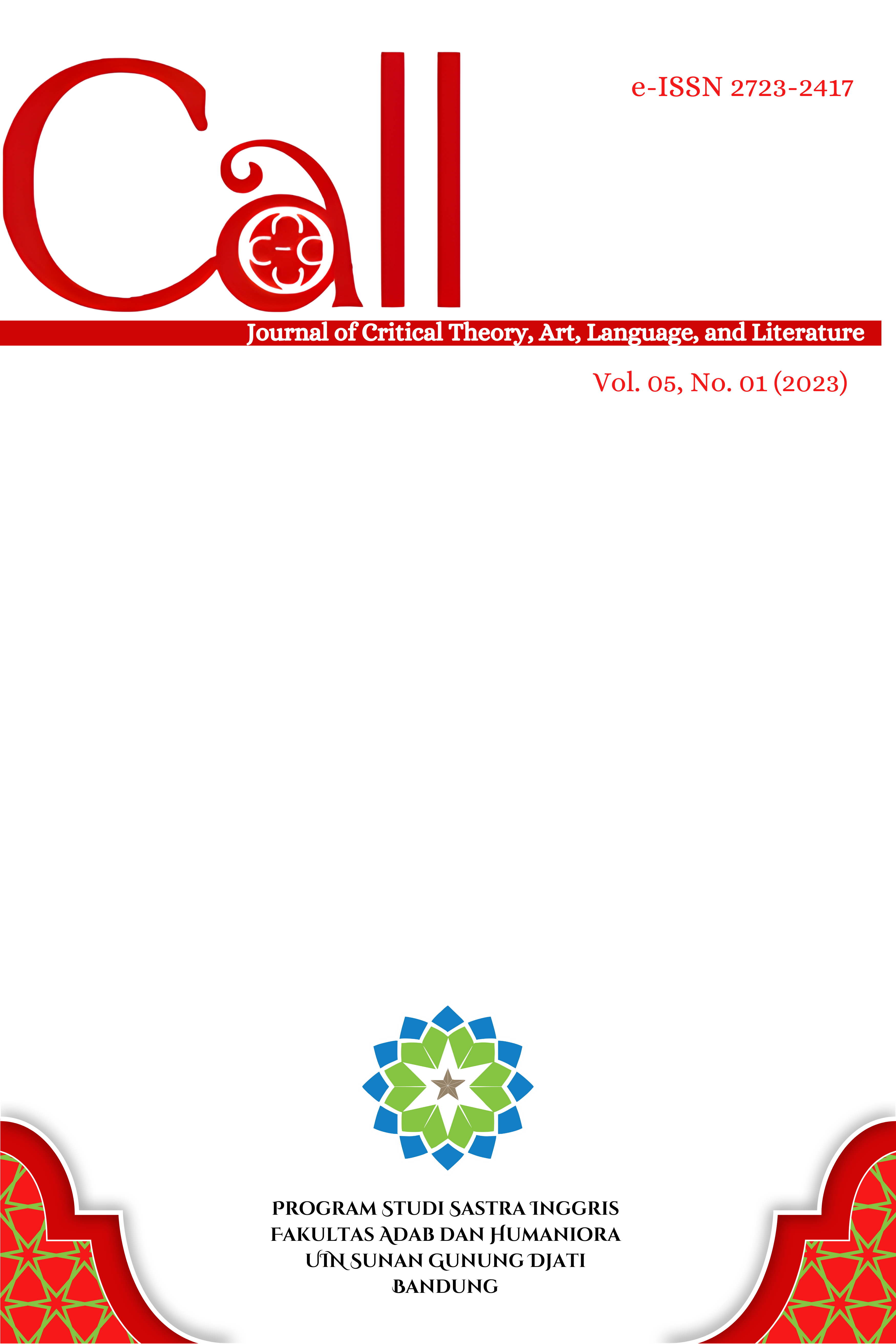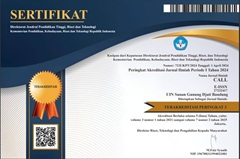TRANSFORMATION OF HEALTH TERMINOLOGY THROUGH DERIVATIONAL AFFIXATION IN CNN ONLINE NEWS
DOI:
https://doi.org/10.15575/call.v5i1.16973Abstract
Derivational affixation is a linguistic process that involves the creation of new words by adding prefixes, suffixes, or infixes to existing words. These affixes can modify the word's part of speech, alter its meaning, or both. The present study had the objective of identifying various types of derivational affixes and examining the morphological transformations they bring about in health-related terms within CNN's online news platform. Employing qualitative research methods informed by Katamba's theoretical framework (2005), the investigation utilized a dataset sourced from the news website https://edition.cnn.com/. The dataset encompassed 30 health-related news articles spanning topics such as COVID-19, mental health, food, beauty, sleep, and pregnancy. Based on data analysis from 30 health news, there were 13 words containing derivational prefixes and 64 words containing derivational suffixes. The words in derivational prefix did not change the part of speech but changed the meaning. In derivational suffixes, there are 7 types of changes that change word from verb to noun (23 words), adjective to noun (14 words), noun to noun (10 words), noun to adjective (7 words), adjective to adverb (5 words), verb to adjective (4 words), and the last noun to verb (1 word). From the findings, it can be concluded that the addition of affixes to words explains the function of sentence structure. Derivational suffixes are found the most because they have many interactions of forms, meanings, and functions.
Â
Keywords: derivational affix, health, prefix, suffix, news
References
Ardiansyah, E. A. (2020). Critical discourse analysis on a text “friday prayer at home for most but some risk infection at mosques†by the Al Jazeera English. Al-Tsaqafa : Jurnal Ilmiah Peradaban Islam, 17(1), 58–66.
Aronoff, M., & Fudeman, K. (2011). What is morphology? (2nd ed). Oxford: Blackwell Publishing.
Faradisa, A., Aziz, Z. A., & Yasin, B. (2019). An analysis of word formation processes found in instagram. Research in English and Education (READ), 4(2), 52–64.
Finegan, E. (2003). Language Its Structure and Use (5th ed). Belmont: Thomson Wadsworth.
Indrian R. D. (2022). A morphological analysis of word formation process used in mobile application names. Indonesian Journal of English Language Studies, 8(2), 52–61.
Katamba, F., & Stonham, J. (2006). Modern linguistic: morphology (2nd ed). New York: Palgrave Macmillan.
Katamba, F. (2005). English words. New York: Routledge.
Kuang, W., Jiang, H., Zhang, Y., Wang, Q., & Yang, M. (2018). Mobile phone media and its public opinion management. Social Media in China. 2018(1), 175–208.
Mahi, M. H (2018). Journalistic: literary journalism. Jakarta: Prenadamedia Group.
Maulidina, S., Indriyani, F., & Mardewi, T. (2019). Derivational and inflectional morphemes in the Jakarta Post. ENGLISH EDUCATION Journal of English Teaching and Research, 4(2), 104–122.
Patton, M. Q. (2002). Qualitative research & evaluation methods. Beverly Hills: Sage Publications.
Plag, I. (2003). Word-formation. Cambridge: Cambridge University Press.
Purwanti, Y. (2020). An analysis on the use of derivational and inflectional morphemes in English song lyrics on Maher Zain’s “forgive me†album. Channing: English Language Education and Literature, 5(2), 57–62.
Ratih, E., & Gusdian, R. I. (2018). Word formation processes in English new words of Oxford English Dictionary (OED) online. CELTIC: A Journal of Culture, English Language Teaching, Literature & Linguistics, 5(2), 24-35
Rizki, I., & Zakrimal. (2020). An analysis morpheme in smoking article. Linguistic, English Education and Art (LEEA) Journal, 4(1), 34–44.
Spencer, A. (1991). Morphological theory. Oxford: Blackwell Publisher Ltd.
Yule, G. (2017). The Study of Language (6th ed). Cambridge: Cambridge University Press.
Zuhri, M. S., Suwandi, & Fitriati, S. W. (2022). Morphological process of morphemes through word-formation process in students’ writing. English Education Journal, 12 (3) (2022), 301–309.
Downloads
Published
Issue
Section
Citation Check
License
Authors who publish in CALL agree to the following terms:
- Authors retain copyright and grant the journal right of first publication with the work simultaneously licensed under Attribution-ShareAlike 4.0 International (CC BY-SA 4.0) License that allows others to share the work with an acknowledgment of the work's authorship and initial publication in this journal.
- Authors are able to enter into separate, additional contractual arrangements for the non-exclusive distribution of the journal's published version of the work (e.g., post it to an institutional repository or publish it in a book), with an acknowledgment of its initial publication in this journal.
- Authors are permitted and encouraged to post their work online (e.g., in institutional repositories or on their website) prior to and during the submission process, as it can lead to productive exchanges, as well as earlier and greater citation of published work (See The Effect of Open Access).




